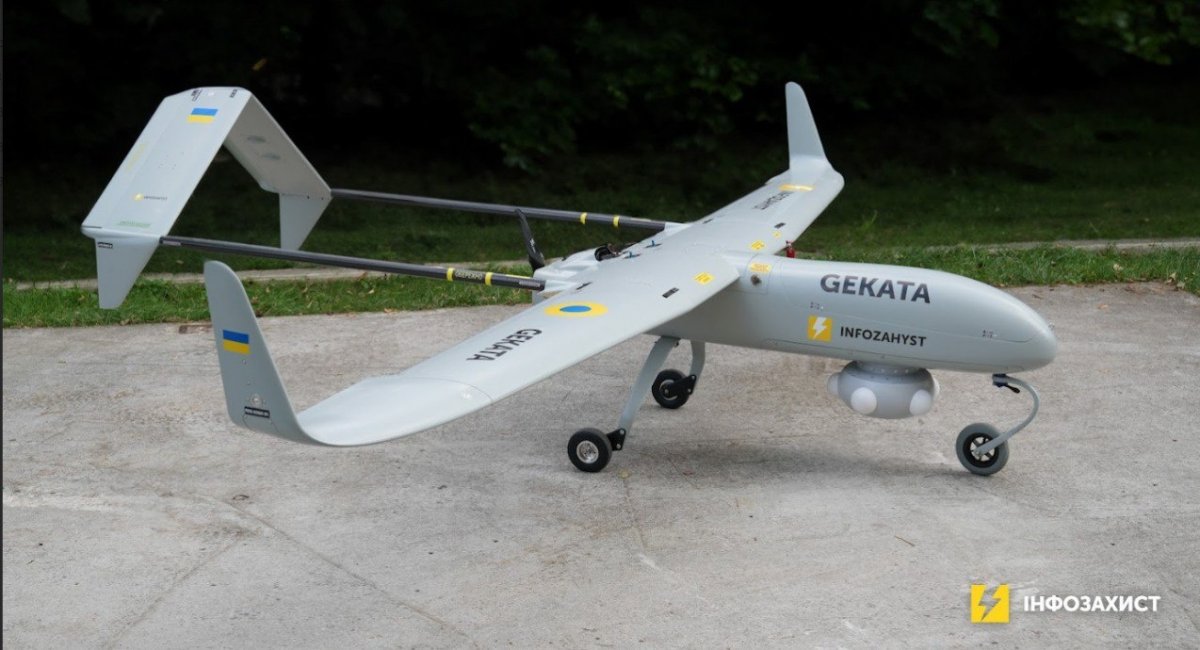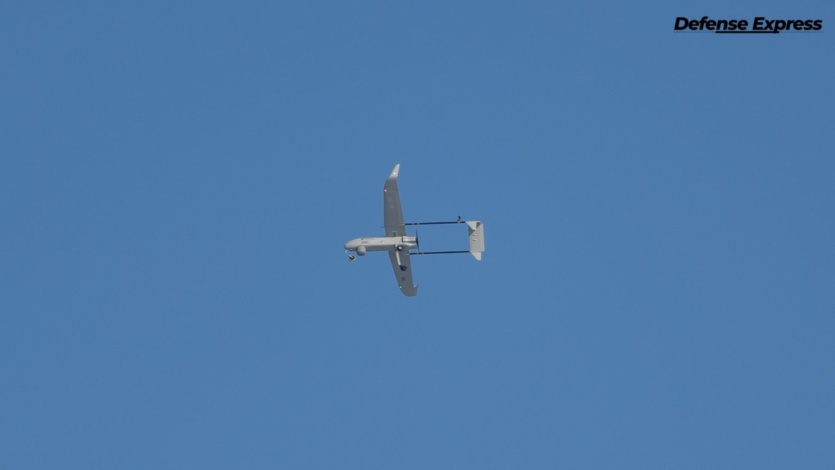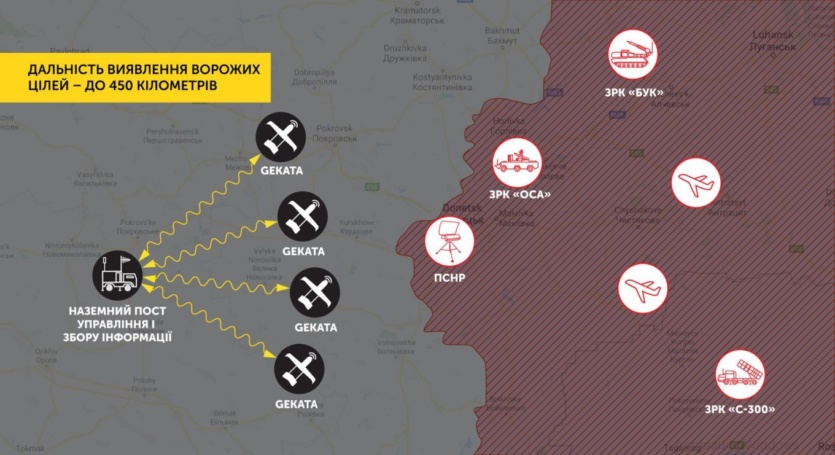
Gekata is a Ukrainian UAV-based electronic warfare system for “exposing” the enemy’s deep rear (up to 450 km)
The effectiveness of countering Russian invaders often depends on the use of specialized UAVs. In the early stages of the liberation war in Ukraine, there was a shortage of these tools, but their development has recently intensified, and this is already bearing fruit. For example, the SBU’s own Sea Baby marine drone attacked the Crimean bridge.
At the same time, Ukraine is creating an airborne radio reconnaissance complex based on the Gekata drone. It is designed to detect military equipment of the Russian occupiers far beyond the front line. And then the Armed Forces will be able to destroy the identified targets using other means of destruction.

Gekata is the latest development of the Ukrainian Infozahyst Research and Development Center. According to the developers, this complex will be able to perform a wide range of radio reconnaissance tasks. Gekata will search for, detect and identify signal pulses from enemy systems such as radars, electronic warfare and air defense systems, and aircraft. The company is actively working on creating a corresponding bank of signals from hostile systems.
It is noted that one full-fledged airborne Gekata complex consists of six PD-2 UAVs with a suspended container with radar equipment and one ground control post. Such a system will be able to cover a 100 km area along the front line, and the range of target detection is 450 km. This will allow UAVs to operate beyond the range of Russian air defense systems, but will be able to conduct reconnaissance throughout the temporarily occupied territory of Ukraine, including Crimea.

Importantly, the Gekata system itself does not emit any signals during operation. Thus, it will be very difficult for the enemy to hunt down PD-2, which can be located at a distance of up to 200 km from the front line and still “see” the situation at a depth of 250 km. Gekata is capable of tracking 200 targets simultaneously. The data can be transmitted in real time or stored on internal media to ensure complete “radio silence” or flight autonomy.
Tactical and technical characteristics of the Gekata system:
- operating frequency range – 2-18 GHz (as standard);
- The receiver type is superheterodyne;
- 800 MHz real-time instantaneous viewing bandwidth;
- the number of channels independent of each other at the hardware level is 2;
- instantaneous bandwidth of one channel is 400 MHz;
- single-signal dynamic range of more than 72 dB;
- 360° azimuthal field of view;
- number of targets tracked – up to 200 moving targets;
- the method of determining the coordinates is TDOA+AOA.
The PD-2 UAV from Ukrspecsystems is already being successfully used by the Armed Forces of Ukraine on the battlefield, primarily as a VTOL version with vertical takeoff and landing. This expands the options for operating the drone at unprepared sites.
The developers name several significant advantages of the Gekata complex:
- only one operator can manage the operation of the entire complex;
- Compared to ground-based RTR systems, the Gekata system requires less power consumption;
- high mobility of the complex;
- short deployment time.
Infozahyst plans to conduct all necessary tests of Gekata by the end of this year. We hope that after that the complex will be able to prove itself in combat conditions and will help liberate the temporarily occupied territories from Russian invaders.

